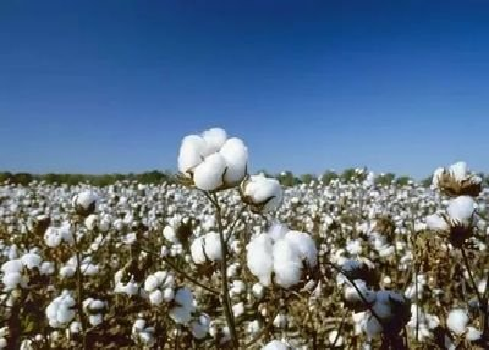SunSirs: Cotton Prices Rose Sharply with the Help of Tight Supply Side
July 22 2025 09:14:20 SunSirs (John)
Price trend
The domestic cotton spot inventory was slowly decreasing, and the supply side's price mentality was increasing. Spot prices were following CF futures upward adjustment of prices, and the market price center was steadily rising. According to the Commodity Market Analysis System of SunSirs, as of July 21, the spot price of 3128B grade cotton was 15,596 RMB/ton, an increase of 1.85% compared to last week. In terms of futures, last week CF futures changed its previous volatile trend, with the main contract climbing above 14,000, ending more than two months of volatile consolidation and opening up a strong upward trend. Cotton spot prices also rose with futures.
Domestically:
Supply side: Cotton inventory was in a state of digestion, with no clear information on quotas, and tight expectations were evident. Domestic commercial cotton inventory had dropped to an annual low, and cotton imports continued to decline. As of July 18, 2025, the total commercial cotton inventory was 2.4575 million tons, a decrease of 149,000 tons compared to last week. In terms of imports, according to customs statistics, China's cotton imports in June 2025 were 30,000 tons, a decrease of 10,000 tons compared to the previous month, a decrease of 25.0%; A year-on-year decrease of 130,000 tons, a decrease of 82.1%. In 2025, China will import a total of 460,000 tons of cotton, a year-on-year decrease of 74.3%.
In terms of new cotton growth, the overall growth of cotton in Xinjiang was good, with a flowering rate of over 80%, and some cotton had already set bells. Although the growth of new cotton in Xinjiang region in the new year was faster than the same period in previous years, the impact of local hail on the expected increase in cotton production in the new season was limited, and the expectation of high yield was strong. However, the actual impact on the market was limited in the context of rapid destocking, and the tight supply and demand structure provides short-term supported for cotton prices.
On the demand side: Despite the significant increase in cotton prices, the situation was not optimistic for downstream textile enterprises. On the one hand, with the rise in cotton prices, downstream market raw material costs increased, production profits declined, and the willingness to receive goods in the yarn market was more cautious. Purchasing behavior was mostly guided by actual demand, with replenishment based on demand. Cotton destocking was mainly concentrated in Xinjiang. As of July 17th, the operating load of mainstream textile enterprises was 69.50%, a decrease of 0.9% month on month, and the operating rate decreased significantly last week. On the other hand, in the traditional off-season, large and long orders were scarce, market purchasing and sales activity decreased, and inventory pressure on enterprises continued to increase.
On the international front:
International cotton prices were showing a fluctuating upward trend, with the trading center rising compared to last week. Global supply expectations increased, and data on signed shipments of US cotton had weakened again in the latter part of the week. The export sales report from the US Department of Agriculture (USDA) showed that for the week ending July 10th, the net export sales of US cotton for the current year increased by 5,500 bags, a decrease of 93% from the previous week and an average decrease of 89% from the previous four weeks. There was a lack of positive resonance within and outside the industry, and cotton prices may not see sustained breakthroughs, with the highest weekly increase reaching 69.15 cents/pound.
Market outlook
The cotton market fundamentals were characterized by "low inventory+weak demand", with cotton prices continuing to rise under the resonance of favorable supply side conditions. However, high inventory during the off-season suppressed the increase, and profits continued to squeeze downstream production, which was still declining. From the perspective of the end consumer market, the autumn and winter orders had not yet been initiated, and some textile companies increased their willingness to raise prices. Purchasing remained cautious. In this context, the contradiction between upstream and downstream may further intensify, and caution should be taken against the risk of cotton prices falling after the rise.
If you have any inquiries or purchasing needs, please feel free to contact SunSirs with support@sunsirs.com.
- 2025-12-17 SunSirs: Cotton and Cotton Yarn Market Update Yesterday
- 2025-12-16 SunSirs: China's Textile and Apparel Exports Grow 7.22% Month-on-Month in November 2025
- 2025-12-15 SunSirs: Analysis of China's Agricultural Product Supply and Demand Situation for December 2025 Released
- 2025-12-12 SunSirs: With Expected Increases in Consumption, Cotton Prices Fluctuated and Rose
- 2025-12-11 SunSirs:China's Southern Xinjiang Long-Staple Cotton Planting Area Expected to Rebound in 2026



